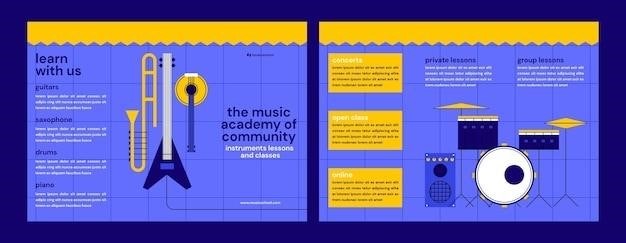Finding a “Workbook for Tonal Harmony PDF”
Locating a PDF version of a tonal harmony workbook requires diligent searching. Numerous editions exist, from Kostka and Payne’s widely used text to others. Online retailers, used book sites, and library databases offer potential avenues for acquisition. Beware of unauthorized copies; prioritize legitimate sources for legal access.
Popular Textbooks and Authors
Several prominent textbooks accompany workbooks focusing on tonal harmony. Kostka and Payne’s “Tonal Harmony” is a widely recognized and frequently used text, often paired with a corresponding workbook. Its numerous editions reflect its enduring popularity within music theory education. The authors’ expertise in music theory contributes to the book’s comprehensive and well-structured approach, making it a standard for many educational institutions. Other authors may produce alternative texts and workbooks with varying pedagogical approaches and levels of difficulty. The choice often depends on the specific curriculum and the instructor’s preference. The availability of workbooks as PDFs varies by edition and publisher. Some publishers provide digital access alongside print versions, while others may not offer digital formats. Investigating specific publishers’ websites and educational resource providers is key to locating the desired material. Careful consideration of the textbook and the associated workbook’s approach is crucial to align with individual learning styles and course requirements.
Editions and Versions of the Workbook
The availability of workbooks for tonal harmony varies considerably depending on the specific textbook they accompany. Kostka and Payne’s “Tonal Harmony,” for instance, has seen multiple editions, each potentially having its own corresponding workbook. These editions may differ in content, exercises, and even the inclusion of supplementary materials like online access codes. Finding a specific edition’s workbook, particularly in PDF format, requires careful searching. Some older editions might not have readily available digital versions, while newer ones might offer online access alongside print copies. The publisher’s website is the best resource to check for the availability of digital versions of the workbook. Variations also occur in the format of the workbooks themselves. Some might be strictly exercise books, while others could integrate theoretical explanations or additional learning resources within their pages. Understanding these differences is crucial for finding the most suitable version for individual needs and learning objectives.
Accessing PDF Versions Online
Directly accessing PDF versions of tonal harmony workbooks online requires caution. While some legitimate sources might offer downloadable PDFs for purchase, many websites offering free downloads may host unauthorized copies. Downloading copyrighted material without permission is illegal. Reputable online bookstores sometimes offer digital versions of textbooks and their accompanying workbooks. These digital versions are usually in PDF format and can be downloaded legally after purchase. Additionally, university library websites might provide access to digital copies of these materials for enrolled students. Always check the terms of service and copyright information before downloading any PDF. Searching for specific ISBN numbers or book titles on reputable sites can help you filter out illegitimate sources and find authorized sellers or libraries that offer digital access to the workbooks. Remember that respecting copyright is crucial and using unauthorized copies can have legal consequences.
Legitimate Sources for Purchase
Acquiring a “Workbook for Tonal Harmony” PDF legally involves exploring various avenues. Major online retailers like Amazon, Barnes & Noble, and others often sell digital versions of music theory textbooks and workbooks. These digital copies are typically available as PDFs, allowing for convenient download and access. University bookstores affiliated with music programs frequently stock both physical and digital copies of commonly used tonal harmony workbooks, providing a reliable source for students. Directly purchasing from the publisher, such as McGraw-Hill, is another option, although their online stores might not always offer PDF downloads. Check their websites for purchasing options. Some specialized music retailers, both online and physical, might also offer the workbook in digital formats. Always verify the seller’s legitimacy to avoid purchasing counterfeit or unauthorized copies. Remember to compare prices across different vendors before making a purchase to ensure you get the best deal.
Online Resources and Supplemental Materials
Beyond the core workbook, numerous online resources enhance tonal harmony study. Websites like YouTube offer instructional videos covering various aspects of tonal harmony, often complementing workbook exercises. Many educational platforms, such as Coursera and edX, provide free or paid courses that delve into tonal harmony concepts, offering supplementary learning materials. Interactive exercises and online tools, some free and others subscription-based, allow for practical application of theory. These platforms often feature quizzes and assessments to gauge comprehension. Blogs and forums dedicated to music theory provide discussion spaces for students to ask questions, share insights, and receive feedback. Always critically evaluate the reliability and accuracy of online resources before integrating them into your studies. Remember to check the credentials and expertise of the creators of any online material you plan to use.

Using the Workbook Effectively
Maximize your learning by consistent practice. Regularly review concepts, and utilize online resources to supplement your studies. Address challenges promptly; seek clarification when needed. Effective study habits are key to mastering tonal harmony.
Exercise Types and Approaches
Workbook exercises for tonal harmony often encompass a range of activities designed to build a strong foundation in music theory. These typically include tasks such as analyzing existing musical passages to identify chord progressions, voice leading, and melodic contours. Students might also be asked to compose short musical phrases adhering to specific harmonic rules or to create four-part harmonizations for given melodies. The exercises might progress from simple diatonic exercises to more complex modulations and chromaticism. Some workbooks incorporate ear-training exercises to develop aural skills in identifying intervals, chords, and cadences. A multifaceted approach ensures a comprehensive understanding of tonal harmony. Regular practice and systematic work through the exercises are vital to mastering the concepts. The level of complexity within the exercises gradually increases, providing a structured learning path. The inclusion of diverse exercise types makes learning engaging and reinforces different aspects of the subject matter.
Integrating with Tonal Harmony Textbooks
Effectively using a tonal harmony workbook necessitates its integration with a comprehensive textbook. The workbook’s exercises should directly complement and reinforce the concepts explained in the textbook. Each chapter in the textbook should ideally have corresponding exercises in the workbook. This allows for immediate application of theoretical knowledge. The workbook should provide ample practice opportunities for the skills introduced in the textbook, enabling students to solidify their understanding. Regularly referencing the textbook while completing workbook exercises will clarify any confusion or ambiguities. This integrated approach fosters a deeper comprehension of tonal harmony principles. The combination of theoretical explanation and practical application is crucial for successful learning. Students should consult the textbook whenever they encounter difficulties in the workbook exercises. This iterative process strengthens the connection between theory and practice, leading to more effective learning outcomes.
Utilizing Online Learning Platforms
Many online learning platforms offer supplementary resources that can enhance your study of tonal harmony using a workbook. Interactive exercises, tutorials, and audio examples can be invaluable. Platforms like Coursera, edX, and others often feature courses on music theory, including tonal harmony. These platforms can provide additional explanations and context for the concepts covered in the workbook. Online forums or communities dedicated to music theory can offer peer support and collaboration. Students can ask questions, share their work, and receive feedback from fellow learners or instructors. Some platforms incorporate gamification elements, turning the learning process into an engaging experience. These features increase motivation and retention of musical concepts. Remember to check the platform’s compatibility with your chosen workbook and textbook. By leveraging online learning platforms, you can supplement your studies and gain a more complete understanding of tonal harmony.
Troubleshooting Common Challenges
Working through a tonal harmony workbook can present various difficulties. Understanding complex concepts like voice leading or chord progressions may require repeated review and practice. If you encounter problems with specific exercises, seeking clarification from instructors or online forums can be beneficial. Remember to break down complex problems into smaller, more manageable parts. Ensure you understand the fundamental principles before moving on to more advanced exercises. For example, thoroughly grasping basic triads and seventh chords is crucial before attempting more intricate harmonic structures. If a particular exercise remains persistently challenging, consider seeking alternative explanations or resources to grasp the underlying concepts. Utilizing online tutorials or videos can provide different perspectives and enhance comprehension. Consistent practice and a systematic approach to tackling challenges are key to success in mastering tonal harmony.

Alternative Resources for Tonal Harmony Study
Beyond workbooks, explore online courses, interactive software, and supplementary texts. Many free tutorials and apps offer interactive exercises and theoretical explanations to enhance learning. Consider additional textbooks offering diverse approaches to tonal harmony.
Free Online Tutorials and Courses
The internet provides a wealth of free resources for studying tonal harmony, supplementing or even replacing the need for a purchased workbook. Many educational websites and YouTube channels offer comprehensive tutorials covering fundamental concepts like triads, seventh chords, and chord progressions. These often include video lectures, audio examples, and practice exercises, allowing for self-paced learning. Some platforms offer structured courses with quizzes and assignments, providing a more formal learning experience without the cost. Look for reputable sources such as university open courseware initiatives or established music education platforms. Remember to cross-reference information from multiple sources to ensure accuracy and a well-rounded understanding. While free resources lack the structured approach of a dedicated workbook, they offer flexibility and accessibility, making them valuable additions to any tonal harmony study plan. Carefully evaluate the quality and credibility of free online resources to maximize their effectiveness.
Interactive Software and Apps
Interactive software and apps offer a dynamic alternative to traditional workbooks for learning tonal harmony. These digital tools often provide a more engaging and personalized learning experience than static PDF workbooks. Many applications feature interactive exercises, allowing students to construct chords, analyze progressions, and receive immediate feedback; Some apps simulate aural training exercises, helping students develop their ear for harmony. The visual nature of these programs can aid in understanding complex harmonic concepts. The ability to instantly check answers and receive explanations contributes to more efficient learning. Look for apps that include a wide range of exercises and theoretical explanations to maximize their value. While these tools provide valuable practice, remember they shouldn’t entirely replace the theoretical foundation offered by a comprehensive textbook or workbook; they serve best as a supplementary tool for active learning and skill development.